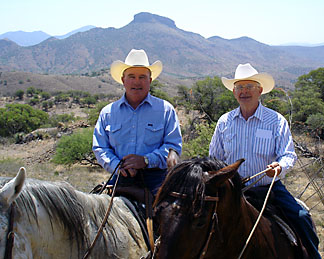Save the Land By Saving the Rancher
By: Amos S. Eno
Posted on:09/09/2011What this Writer on Range thinks . . .
For the past month, I've had the pleasure of working with Betsy Marston, an editor at High Country News, the the newspaper that covers all things Western with insight and style. I'm pleased to have been ushered by Betsy into the ranks of their "Writers on the Range" syndicated op-ed series. An excerpt follows:
The behavior of Congress might seem unusually erratic, but one thing can be confidently predicted: The Interior Appropriations bill for 2012 will contain the largest cuts in conservation funding in 40 years. Look for lots of hand-wringing and gnashing of teeth in environmental circles.
For many reasons, though, I see this as a godsend for ranchers across the West. Whenever public land expands, the private land near it tends to face increasing regulation — the pattern for approximately a hundred years. Much of our public policy and funding has been dedicated to protecting our rich estate of public lands. But what few people understand is that most of the West’s public land is over 3,000 feet in elevation; our federal conservation lands are an inventory of rock, ice, evergreen forests and high sagebrush deserts.
Private ownership is where the West’s most biodiverse lands exist, and they are found where the region’s lifeblood is — around water. Privately  owned ranches host the bulk of riparian areas, creating the arteries and veins that flow through our arid and mountain regions. That makes Western ranches the most important segment of private lands in America today — five times more important than lands east of the Mississippi. They’re crucial because they provide all the water for Western metropolitan areas, as well as the water that’s needed to nourish agriculture, fish, wildlife biodiversity and winter ranges. Ranchlands also provide water for recreation and offer thoroughfares for transportation and our energy grid.
owned ranches host the bulk of riparian areas, creating the arteries and veins that flow through our arid and mountain regions. That makes Western ranches the most important segment of private lands in America today — five times more important than lands east of the Mississippi. They’re crucial because they provide all the water for Western metropolitan areas, as well as the water that’s needed to nourish agriculture, fish, wildlife biodiversity and winter ranges. Ranchlands also provide water for recreation and offer thoroughfares for transportation and our energy grid.
If we want to save the American West as part of America’s great heritage, we need to save its ranchers. Unfortunately, traditional federal government programs and conservation dollars don’t provide the help they need. The most serious problem facing ranchers these days is purely demographic: The average rancher is over 60 years old. More than ranchettes, ski areas, and oil, gas and coal development, the aging of our ranching community is dictating the destabilization and loss of ranches across the West. That is why ranchers need an array of tools and services to help them achieve both a sustainable future and a smooth transition within their families and associations. Once they do that, their working ranches can survive and even prosper into the 21st century.
Because ranchers tend to be conservative, individualistic, and self-help-oriented, the organization I lead, Resources First Foundation, takes Lao Tzu’s approach: “Give a man a fish, feed him for a day; teach a man to fish; feed him for a lifetime.” The nonprofit offers an array of Web-based tools and services for the ranching community.
I know that in the environmental community, most people think land trusts are the solution; I think . . .
To read the rest, go to High Country News and subscribe, then download. Or read this opinion piece in its entirety at The Adventure Journal.
 Sign In
Sign In
 Sign In
Sign In
